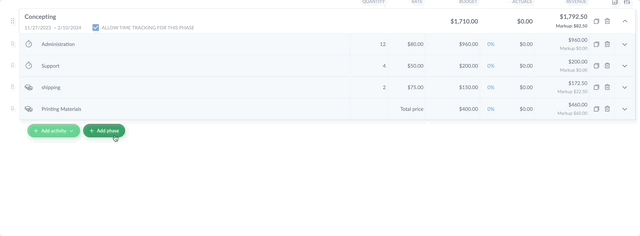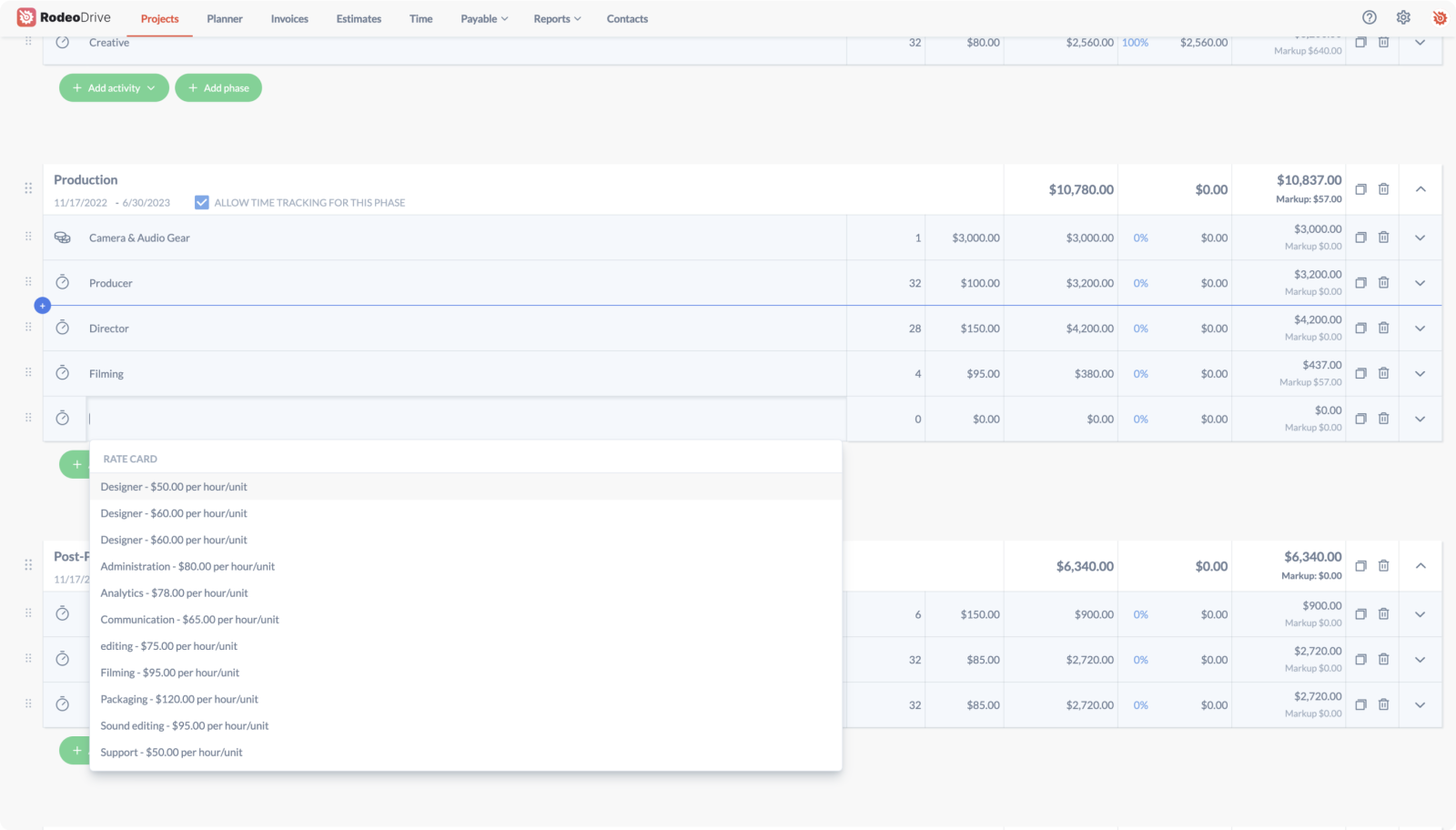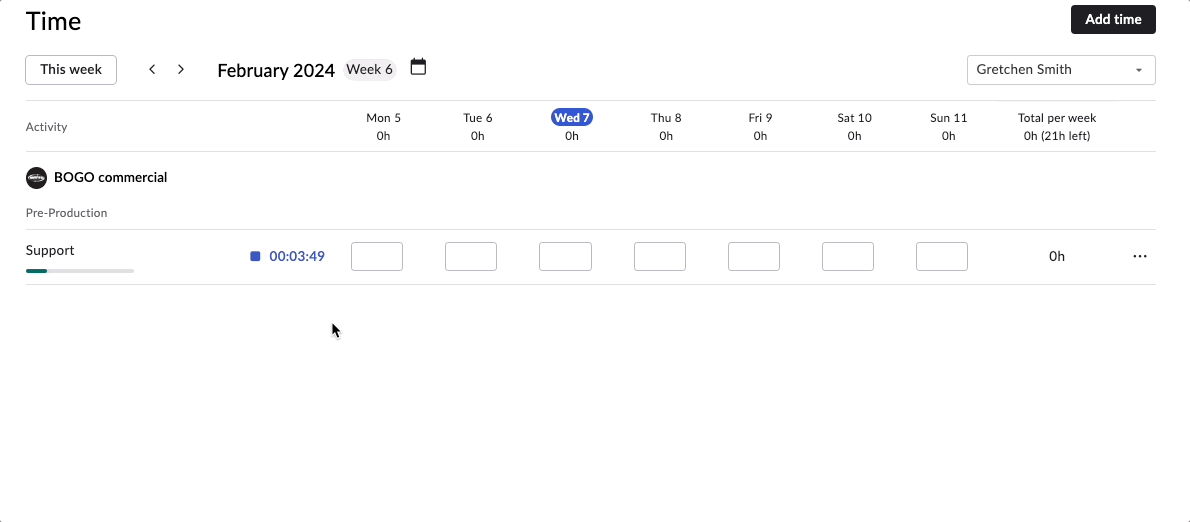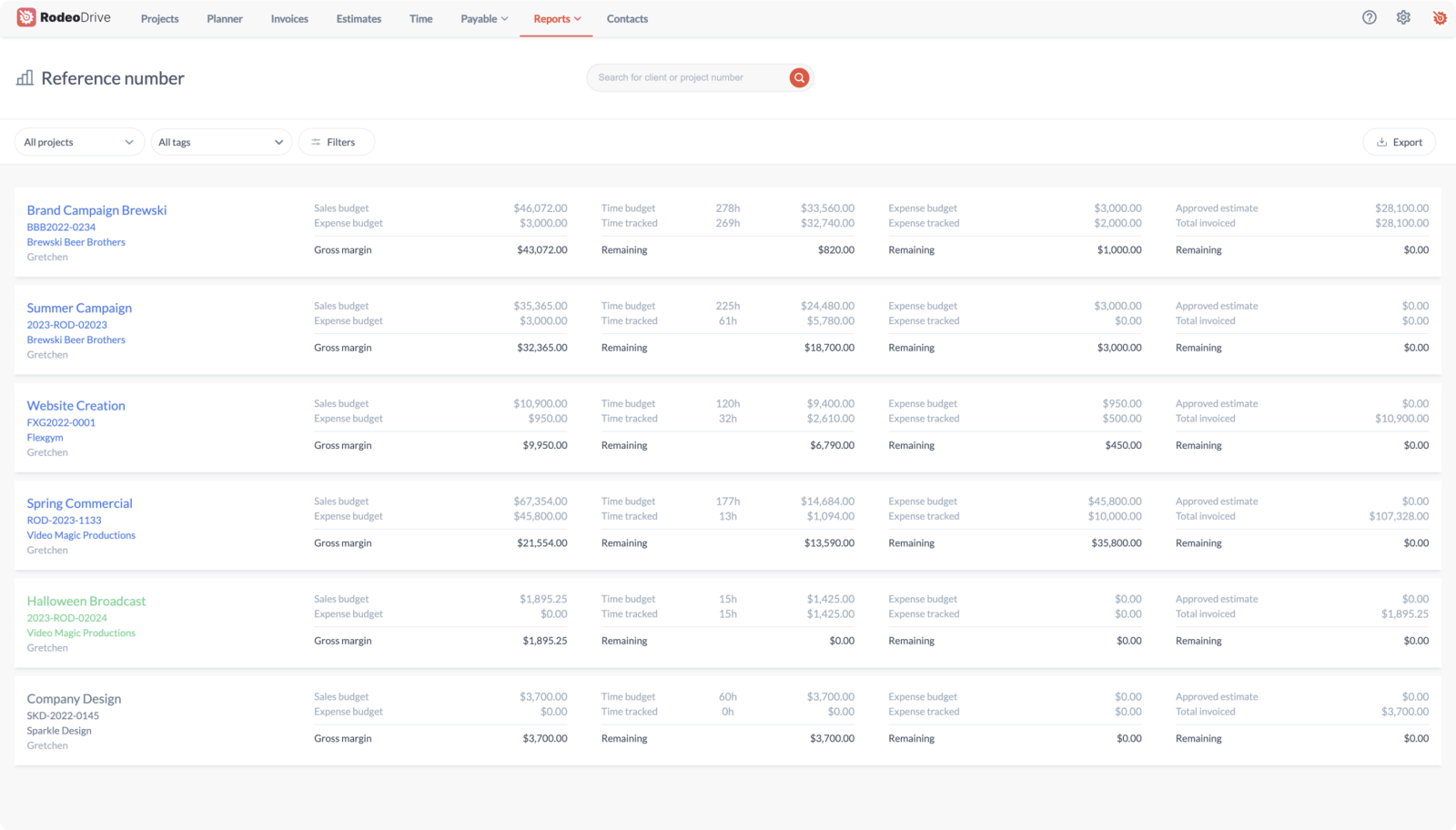How to Measure Project Profitability Like an Expert
An immense amount of resources, time, and effort goes into every single project an organization decides to take on. But if all your hard work won’t turn a profit for your company, it’s probably not worth taking on.
Maybe you already know the importance of project profitability, you’re just not sure how you can get your numbers up. You’re not alone — 35% of agency leaders surveyed admitted they could make significant improvements to their profitability, suggesting that project-based agencies face a serious profitability problem they aren’t sure how to solve.
If you also struggle with this, don’t worry — in this blog, we’ll give you the rundown on everything you need to know when it comes to calculating your profit margins, conducting a rate realization analysis, and a look at a tool that can help make this process easier.
What is project profitability?
A project is considered profitable if it yields a financial gain for your organization, meaning the project is bringing in more money than it costs to execute it. All projects involve costs, such as materials, labor, and other resources. Preventing your costs from ballooning beyond expectations is the key to profitability.
Project-based businesses, such as creative agencies, may fall into the trap of taking on too many projects at once in the hope of accelerating the growth of their business. In reality, taking on projects you’re not equipped to handle can actually result in a loss that works against your goal of turning a profit.
Pricing projects right can be tricky, and just charging your clients more doesn’t always result in high profitability either. Factors like scope creep and poor employee utilization can leave your business without a profit at the end of a project. The first step to ensuring profitability is by taking a look at your team’s time and resource management.

Calculating project profitability
Obviously, your goal is to make money on every project. But when you’re buried in project planning and monitoring, it can be difficult to know whether your project is still profitable.
Luckily, there are an array of profit margin formulas that can help you understand where you’re at. Let’s take a look.
Project profit margins
When it comes to actually measuring your project’s profitability, calculating your profit margin is perhaps the best way to do so. There are a few different types of profit margins — each taking different metrics into account — which we’ll cover in more detail below.
You can calculate your overall profit margin by subtracting your total expenses from your total project revenue and then dividing that figure by the total project revenue. To get a percentage, multiply that number by 100. Project management software tools like Rodeo Drive can automatically calculate this number for you.

But once you calculate your margin, how can you gauge whether it’s healthy? Inc reports that most professional service firms see an operating profit margin between 25 and 40%, which can serve as a solid baseline comparison.

It’s important to note that all project margin calculations rely on accurate accounting of project costs, which is why it’s crucial to have a strong expense tracking system implemented. Failure to record what you’re spending on chips away at your overall project profitability.
Related: 12 Best Project Budgeting Tools to Try in 2023
Gross profit margin
Your gross profit margin represents the relationship between your gross sales revenue and the direct cost of sales. In other words, this number answers the question of how efficiently your team is producing work by identifying the amount of money that’s left over after your costs are accounted for.
Companies producing a physical product will have a clearer definition of the cost of goods sold, whereas organizations providing professional services must examine their labor costs more closely to determine their cost of sales.
To calculate your gross profit margin, subtract your cost of goods sold from your sales revenue, and then divide by that same sales revenue. You want your gross profit to be as high as possible, as this figure represents the profit from every dollar of revenue that you’re bringing in.

Net profit margin
Your net profit margin measures a company’s net earnings after its expenses have been accounted for, including its interest and tax payments. This makes net profit margin a good way of measuring how well a company is managing its expenses – a useful metric of overall financial health.
Calculating your net profit margin requires you to divide your net income by your revenue, as your net income already has expenses like interest and taxes deducted from it.
Operating profit margin
Your operating profit margin focuses on how your indirect costs are impacting your profitability.
For a firm engaging in project-based work, your indirect costs aren’t always project-related. These costs might include things like your marketing costs, administrative expenses, research, and development, or equipment depreciation. The cost of your office space would also fall into this category.
By subtracting your operating expenses from your gross profit, you’ll be left with your operating profit, which you then divide by your revenue to determine your margin. A low operating profit margin means your company has room to improve its management of indirect costs. If your indirect expenses are high, you might have a high gross profit margin but a low operating margin.

Metrics for measuring resource profitability
For professional service organizations such as project management teams, your project costs are likely almost entirely made up of labor-related expenses. Because of this, it’s often helpful to calculate your resource profitability on a per-project basis.
You can calculate your resource profit for a project by simply subtracting the direct cost of your resources from the project’s actual revenue. It’s worth noting that the “direct cost of resources” includes all of your direct costs for a project — including things like healthcare and other benefits for salaried employees.

To determine your resource margin as a percentage, you’ll need to subtract your direct cost of resources from your actual revenue and then divide it by your actual revenue.

Rate realization vs. project profitability analysis
Rate realization and project profitability analysis are two similar yet very different methods that are used to measure the financial health of an organization.
In general, profitability analysis is used to assess how profitable an organization’s ongoing operations activities are by using financial and scheduling data. On the other hand, a rate realization analysis is more focused on whether earning potential was achieved based on utilization rates. We’ll get into the nitty-gritty of what this means below.
Rate realization analysis
A rate realization analysis is conducted to identify the amount of money that a project could’ve earned versus the amount it actually earned. Should there be a discrepancy between these two numbers, this analysis will also identify the factors that prevented the project team from realizing its full potential.
This analysis is typically done using software tools that can analyze how well a project’s resources were utilized. Fixing issues that interfere with a project’s earning potential is an excellent way to increase your project profitability for future ventures.
Project profitability analysis
As previously mentioned, profitability analysis is used to understand the profit generated by an organization’s operations as they currently stand.
This is done by comparing revenue generated by client work against the cost of delivering those services, which might include direct costs such as labor and materials. In simple terms, project data is used to determine whether a project is profitable or not.
This type of project profitability analysis is obviously an incomplete picture of everything that goes into project profitability, as you should turn to a profit margin statistic to determine just how profitable your organization is.
For instance, project profitability analysis doesn’t account for overall resource utilization. If your firm has the capacity to take on 30 projects but only has 3 active projects, those 3 projects might be very profitable, but your resource utilization is so poor that the organization more broadly is not profitable since there aren’t enough projects being worked on.
Related: Tracking Billable Hours? Here Are the Top 15 Tools to Boost Profits
Which one should you use?
Although similar, both types of analysis examine different metrics, and therefore, the one you should use entirely depends on your goals.
If you’re looking to identify ways to grow your profitability, rate realization analysis is likely the way to go, since you’ll be able to identify ways to maximize your earning potential or spot the roadblocks that are getting in the way of higher profitability.
But if you’re looking to find ways to cut down on costs, you’ll want to consider a profitability analysis. This can help you take a closer look at the direct and indirect costs that are impacting your ability to turn a profit on your projects.
That said, there’s value in both types of analysis, so it might be worthwhile to conduct both, should you have the means to do so.
Using Rodeo Drive to calculate and analyze your project profits
Rodeo Drive is an all-in-one project management tool that makes project management easy by helping you keep a handle on your project finances to ensure project profitability.
The tool’s robust set of features — including budgeting, task planning, invoicing, and reporting — equips you with the resources you need to see your projects through to successful completion. Not to mention, all of Rodeo Drive’s features are available in-app, meaning you won’t need to purchase any costly third-party software integrations.
Here’s a look at the features that will prove most useful when it comes time to calculate project profitability:
Easily build detailed phase-based budgets
We know that all profitable projects begin with a thorough budget. Thinking through your costs will enable you to properly price your projects – making it more likely that they’re profitable.

A quality budget also makes the monitoring process significantly easier, especially when your budget is phase-based. When you clearly budget your costs, it becomes easier to identify when you’ve overspent and in what area the overspending occurred.
Track your team’s time effortlessly
Your project will only be as profitable as you initially expected if you’re billing the client for the appropriate number of hours worked. If a team member forgets to track their time, this unbilled labor will eat away at your project profits.
This is why having an easy-to-use time tracking system in place is so important. If your time tracking tool is too complex, your team will forget to use it. That’s why Rodeo Drive enables users to track their time by either starting the stopwatch in their planner when they begin working on a project task or by adding a timecard later on.

Access reports on profitability metrics
All of Rodeo Drive’s features are interconnected, which allows us to bring users automatically generated reporting data with a range of insights based on your team’s usage of the platform.

Users can access their project data in Rodeo Drive's "Reports" tab for extra visibility into their project finances and time registration. Report data can be filtered by client, project, or team member, so you can easily understand how each team member contributed to project success.
What are you waiting for? Try Rodeo Drive for free today to see if the tool can help you bring your project profitability to new heights.







